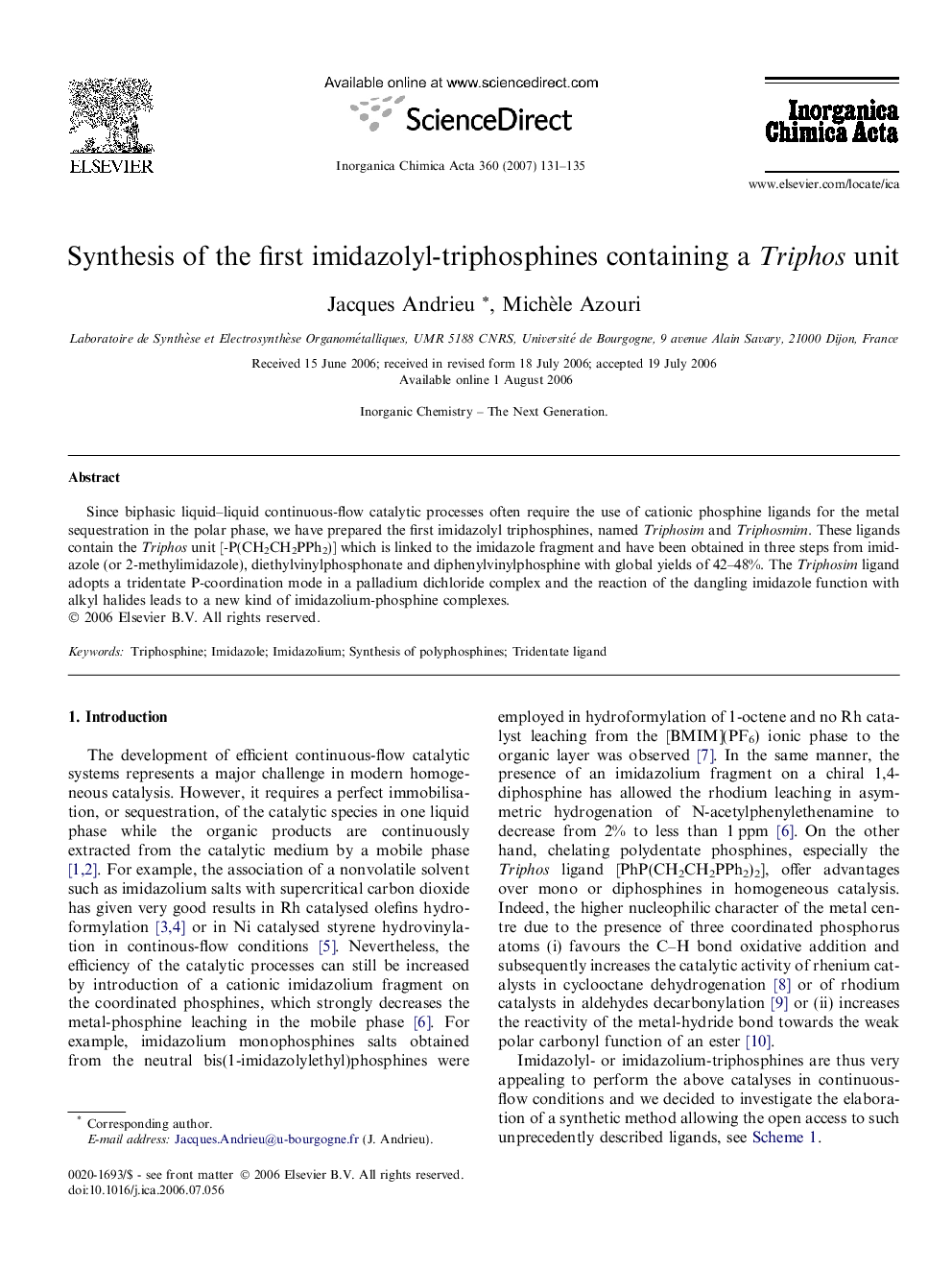| Article ID | Journal | Published Year | Pages | File Type |
|---|---|---|---|---|
| 1310832 | Inorganica Chimica Acta | 2007 | 5 Pages |
Since biphasic liquid–liquid continuous-flow catalytic processes often require the use of cationic phosphine ligands for the metal sequestration in the polar phase, we have prepared the first imidazolyl triphosphines, named Triphosim and Triphosmim. These ligands contain the Triphos unit [-P(CH2CH2PPh2)] which is linked to the imidazole fragment and have been obtained in three steps from imidazole (or 2-methylimidazole), diethylvinylphosphonate and diphenylvinylphosphine with global yields of 42–48%. The Triphosim ligand adopts a tridentate P-coordination mode in a palladium dichloride complex and the reaction of the dangling imidazole function with alkyl halides leads to a new kind of imidazolium-phosphine complexes.
Graphical abstractThe first imidazolyl-triphosphines containing the Triphosunit have been obtained in three steps in 42–48% yields from imidazole (or 2-methylimidazole), diethylvinylphosphonate and diphenylvinylphosphine. The new functional triphosphines adopt a tridentate chelating scheme in a palladium dichloride complex and can be further functionalised into imidazolium-triphosphine ligands.Figure optionsDownload full-size imageDownload as PowerPoint slide
